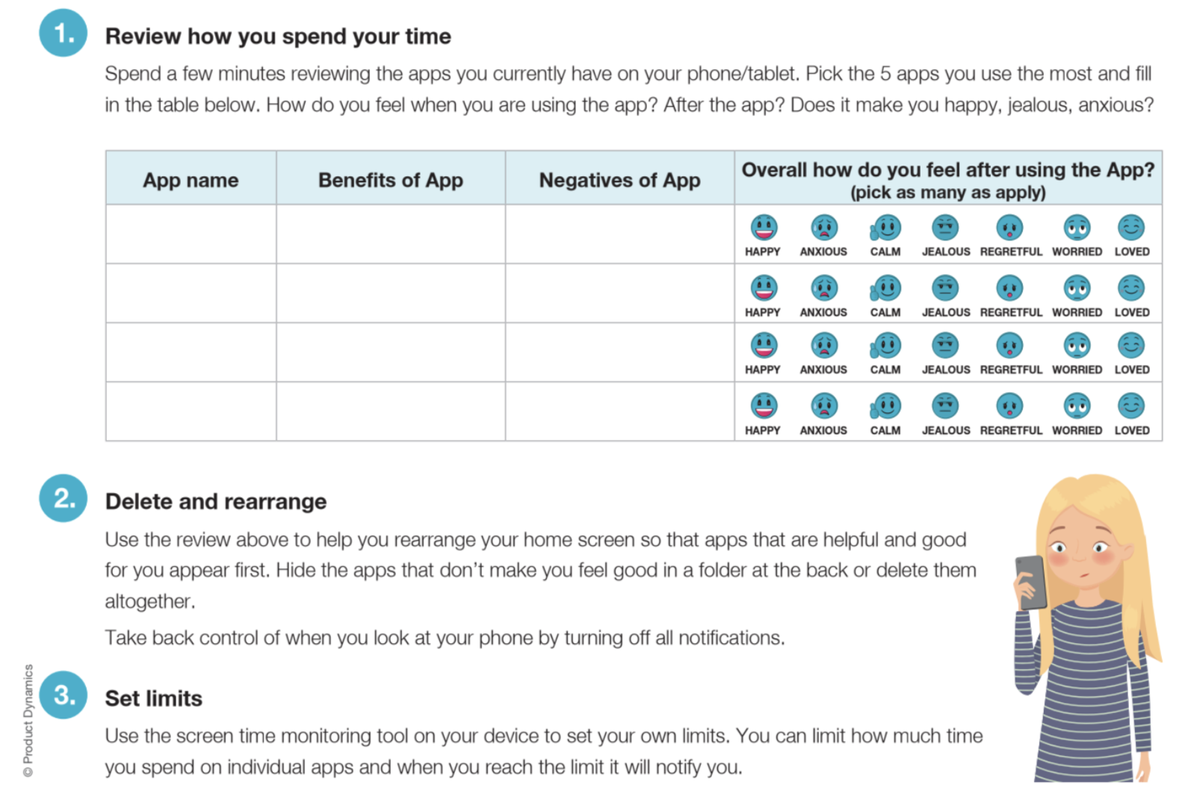The Resilience Project
Amy Carter

The Resilience Project
Amy Carter


During The Resilience Project lessons, students explore the use of devices and how this makes them feel. There’s no denying the role of devices, whether on smartphones, tablets or computers, in so many of our day-to-day lives. While our devices can provide us huge benefits, using them excessively can disconnect us from others and have a negative effect on our wellbeing. Like so many things which can impact our health, whether that be our physical or mental health, often a great way to manage it is through educating ourselves on their effects (both positive and negative), and putting plans in place which make sense for us.
To help us create individual plans around our device use, we’ve included some background information on their potential effects and tips on how to balance device time in our lives.
Understand the effects: Excessive use of devices can lead to feelings of anxiety, depression, and loneliness. It can also disrupt sleep, cause eye strain, and contribute to other physical health issues.
Identify triggers: We’ve all been there—endlessly scrolling on our phones. When we identify our triggers, we simply want to note when and why we’re using our devices excessively. Are we bored, anxious, or procrastinating? Understanding our triggers can help us manage our device use more effectively.
Set limits: Set specific limits on how much time you spend on your devices daily. You can use apps to monitor your usage and set reminders to take breaks.
Find alternative activities: Most of us have experienced a relatively device-free life at some point, so we’re not strangers to device-free activities. Try looking into other activities you enjoy doing instead of being on your device. This can be anything from reading a book to going for a walk to spending time with friends and family…(The list is endless!)
With all this being said, we wanted to reiterate that devices and technology can be hugely beneficial and convenient in many aspects of our lives. What’s crucial is how we use them and aim to use them in a balanced way. Setting parameters for when and how we use our devices and understanding the potential effects of devices on our mental health is incredibly helpful for our overall wellbeing.
And remember, like any new routines we’re trying to learn (or routines we’re trying to unlearn), it takes patience and practice for it to become a habit. Be kind to yourself while you’re adjusting to your new routine. Also, if you’re looking for additional help to help you review your device usage and set your own parameters, check out the TRP activity tipsheet below.


Have a wonderful weekend - stay warm!
Amy Carter
(MHiPS)